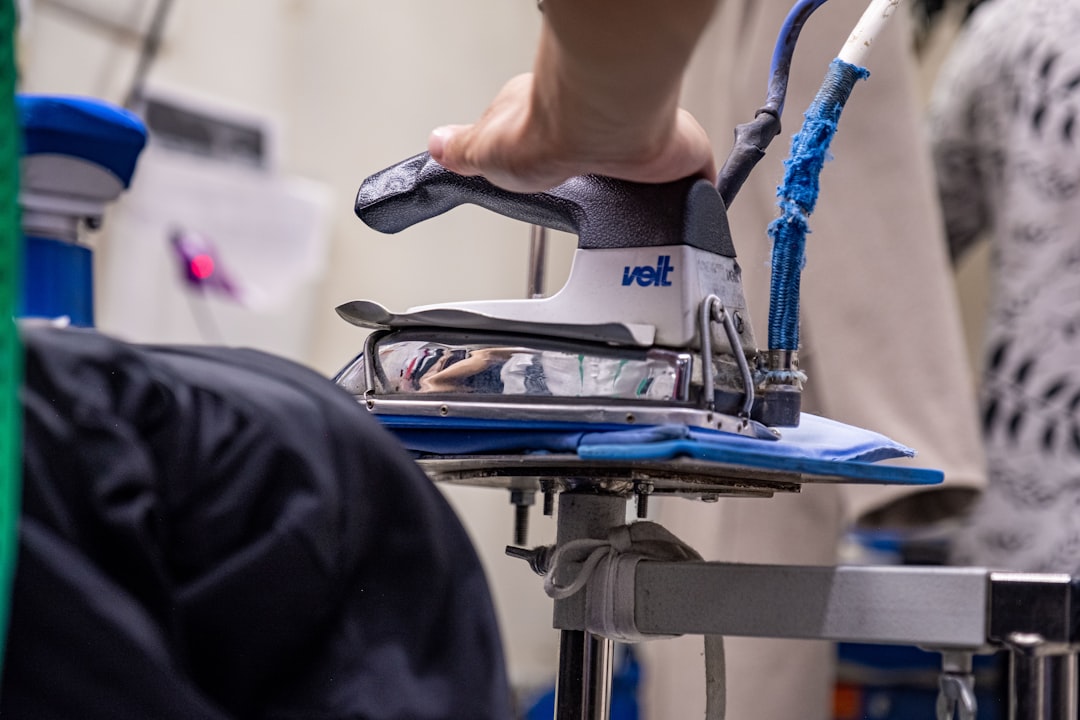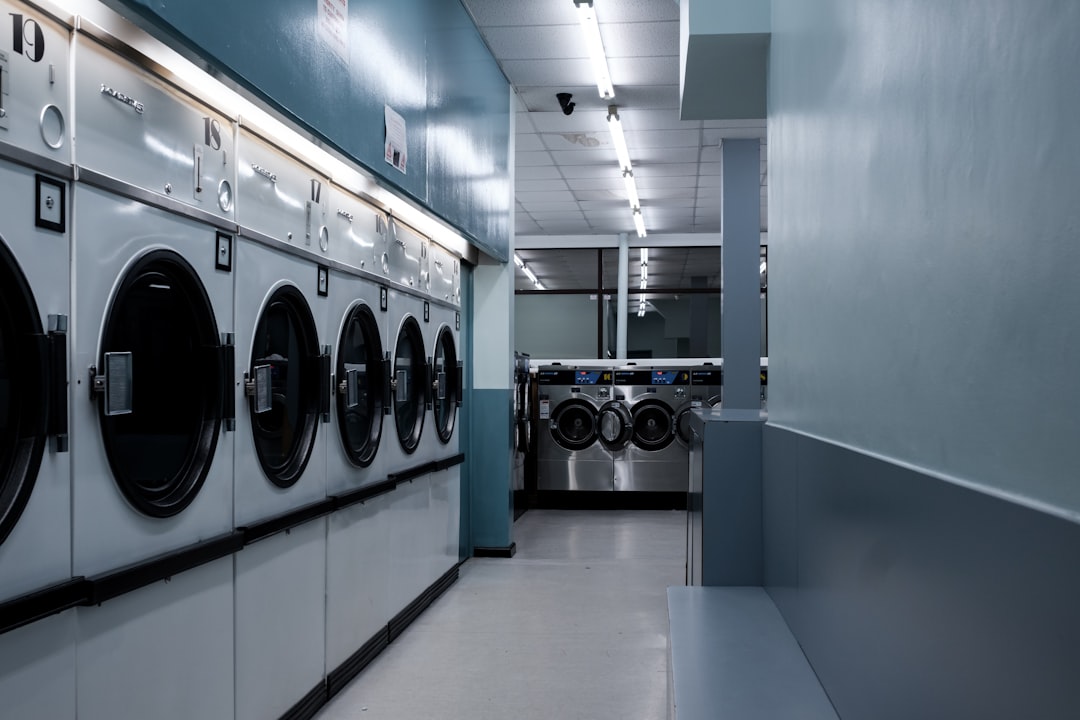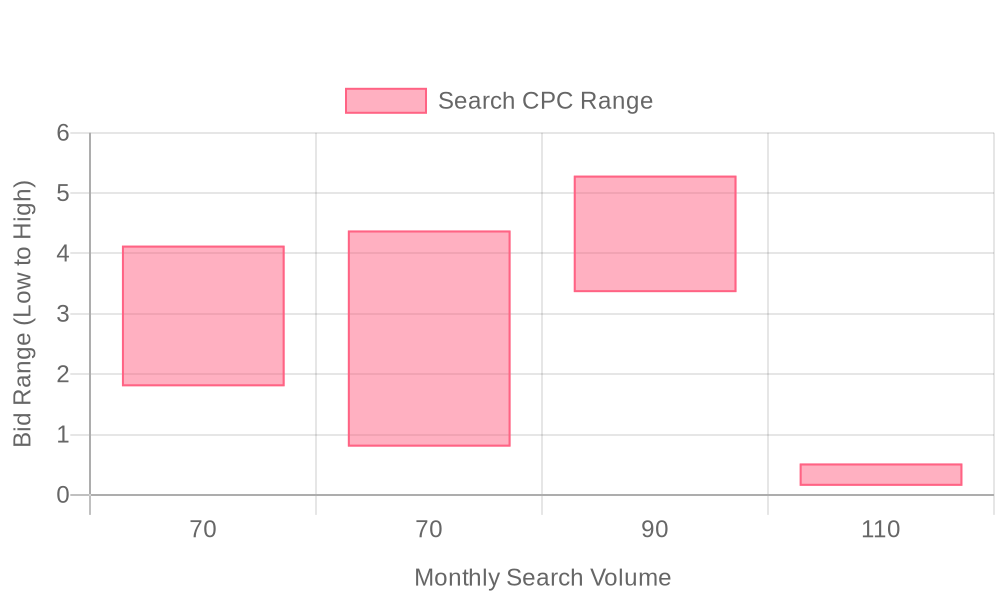
Supercharge your lead generation with a FREE Google Ads audit - no strings attached! See how you can generate more and higher quality leads
Get My Free Google Ads AuditFree consultation

No commitment
Supercharge your lead generation with a FREE LinkedIn Ads audit - no strings attached! See how you can generate more and higher quality leads
Get My Free Google Ads AuditFree consultation

No commitment
Supercharge your lead generation with a FREE Meta Ads audit - no strings attached! See how you can generate more and higher quality leads
Get My Free Google Ads AuditGet My Free LinkedIn Ads AuditGet My Free Meta Ads AuditFree consultation

No commitment
Supercharge your lead generation with a FREE Google Ads audit - no strings attached! See how you can generate more and higher quality leads
Get My Free Google Ads AuditFree consultation

No commitment
In today's complex marketing landscape, self-service dry cleaning businesses often face the challenge of connecting with high-value prospects who do not readily interact with traditional sales channels. These businesses stand to benefit immensely from a strategic combination of both online and offline methods. Google Ads plays a crucial role in capturing high-intent prospects at the precise moment they're searching for services—bridging the gap between broader awareness efforts and your sales process. When executed effectively, Google Ads not only allows you to target decision-makers with precision but also helps monitor ROI accurately, integrating seamlessly with other marketing efforts. This guide will walk you through generating leads for your self-service dry cleaning business using Google Ads, ensuring your approach is both comprehensive and tailored to the unique challenges and opportunities of the industry.

Modern self-service dry cleaning businesses operate in a competitive landscape where capturing high-value leads quickly and efficiently is non-negotiable. Success requires a marketing strategy that integrates paid search with advanced data analytics, ensuring every dollar spent delivers measurable impact—see how Sona Identification can reveal which companies and people are visiting your site.
This playbook delivers a data-centric foundation for anyone seeking to leverage Google Ads for Self-Service Dry Cleaning. By unifying paid search with your broader digital marketing for dry cleaners, you can uncover and convert prospects who might otherwise remain invisible in traditional CRM pipelines. Sophisticated targeting capabilities allow you to identify not just the volume, but the quality of leads—particularly facility managers and sustainability-minded homeowners seeking eco-friendly solutions.
Building effective campaigns starts with precise audience intelligence and keyword targeting crafted specifically for the self-service dry cleaning market. These approaches use intent signals and behavioral data to prioritize users actively searching for local dry cleaning advertising or wash and fold solutions. With enriched audience insights, marketers can update targeting dynamically as prospects move through the funnel, syncing segments seamlessly into ad platforms and CRMs for real-time engagement.
Landing page and creative alignment is critical for maximizing conversion efficiency. Each campaign component—from ad copy to landing page CTA—should be closely matched to audience intent, ensuring messaging resonates and reduces drop-off. For more on matching your ad messaging with buying stage and improving conversions, refer to this buying stage segmentation playbook.
Optimizing campaign performance for self-service dry cleaning marketing is more than bid adjustments; it requires real-time feedback loops and advanced attribution. By tracking both online and offline conversions and connecting them to individual ad interactions, you gain an accurate view of ROI—empowering rapid decisions, shifting budget to high-converting accounts, and responding in the moment to urgent cleaning needs.
Cross-channel integration ties every piece together, breaking down operational silos between sales and marketing. When data flows bi-directionally, teams can coordinate campaigns, share enriched audience signals, and trigger personalized outreach across every touchpoint. This unified approach transforms PPC for dry cleaning businesses from a standalone tactic into a key driver for sustained growth and competitive advantage.
This guide provides both service providers and local operators with proven tools and frameworks to generate qualified Google Ads for Self-Service Dry Cleaning leads. To see how you can launch data-driven campaigns for your business, get started for free with Sona. When combined with robust marketing technology, these strategies ensure your campaigns are precise, scalable, and consistently aligned with revenue goals.

Self-service dry cleaning businesses operate in a landscape where immediate visibility and precise audience targeting drive local growth. Digital marketing for dry cleaners, particularly Google Ads, unlocks the ability to reach time-sensitive customers in moments of genuine need, such as last-minute garment care or urgent wash and fold services. For a step-by-step approach to setting up and optimizing ad campaigns, review this guide to Google Ads for dry cleaning.

Ready to drive measurable results? Get started for free with Sona.

Expanding the reach of self-service dry cleaning businesses requires precision in identifying underserved opportunities within increasingly competitive markets. Growth emerges by combining a data-driven approach with advanced digital marketing for dry cleaners, applying strategies that pinpoint real customer needs and leverage actionable insights. For in-depth marketing tactics, visit the Sona blog.
Integrating advanced data enrichment and audience segmentation into each step transforms how self-service dry cleaning brands identify and capitalize on growth opportunities. With unified, actionable insights and the ability to sync enriched audiences directly into platforms like Google Ads or CRM tools, marketers can continuously refine their outreach to maximize ROI and accelerate business growth.
Ready to accelerate your marketing impact? Get started for free with Sona.

Audience segmentation unlocks measurable improvements in campaign efficiency for self-service dry cleaning businesses. When segments directly mirror the core service touchpoints, every marketing dollar works harder, reaching customers whose needs align precisely with available offerings. For more tips on optimizing your marketing approach, explore our actionable playbooks for B2B marketing.
Ready to transform your segmentation and campaign results? Get started for free with Sona.

| Industry | Keyword | Monthly Search Volume | Competition Level | Low Bid | High Bid |
| Self-Service Dry Cleaning | self service dry cleaning | 70 | LOW | 1.8 | 4.13 |
| Self-Service Dry Cleaning | self dry cleaning near me | 70 | LOW | 0.8 | 4.38 |
| Self-Service Dry Cleaning | self service dry cleaners near me | 90 | LOW | 3.36 | 5.29 |
| Self-Service Dry Cleaning | self dry cleaning | 110 | HIGH | 0.15 | 0.52 |
Effective keyword targeting is the foundation for attracting high-value local customers in the self-service dry cleaning industry. By aligning your campaign with real-world search intent, you reach prospects at the exact moment they’re seeking specialized services, which directly increases qualified lead volume. For practical insights on optimizing your ads, explore this guide to Google Ads for dry cleaning and laundry. Leveraging Sona empowers marketers to identify companies and individuals engaging with their ads, enabling hyper-focused follow-up and nurturing.
Example target keywords guide ad relevance and campaign structure, ensuring your self-service dry cleaning marketing efforts are rooted in real customer demand for services like “local dry cleaning advertising,” “PPC for dry cleaning businesses,” “online advertising for laundromats,” and “Google Ads for wash and fold services.” To put these strategies into action, get started for free with Sona and power your campaigns for measurable growth.
Self-service dry cleaning businesses thrive on capturing high-intent, local search traffic. Begin by clustering keywords according to distinct services: self-service, wash and fold, eco-friendly cleaning, or express garment care. This segmentation allows each campaign to address differentiated client needs, aligning ad spend with the most valuable user segments. To see how other laundromat marketers approach keyword targeting challenges, check out this discussion on Google Ads keyword targeting issues.
Incorporate local modifiers such as "near me," city names, and neighborhood references to target searchers looking for immediate or convenient solutions. Focus on long-tail and query-based phrases: for example, "affordable self-service dry cleaning near me" or "24-hour wash and fold service." These keywords reflect real customer intent and often face less competition, reducing cost per click while increasing conversion rates. Apply negative keywords like "dry cleaning supplies" or "commercial laundry equipment sales" to filter out irrelevant clicks, ensuring ad budgets are spent on potential customers only. Sona identification helps marketers pinpoint not just anonymous website visitors, but the actual companies and individuals engaging with these search terms, enabling even more granular audience refinement and keyword expansion.
Compelling ad copy differentiates your self-service dry cleaning business in a competitive digital landscape. Address industry-specific pain points such as sustainability, convenience, or contactless service. Reference green certifications or low-water usage to attract eco-conscious clientele. Incorporate trust indicators like verified customer reviews, satisfaction guarantees, or years in business, building credibility for first-time users and repeat clients alike. For more insight, explore this guide to optimizing Google Ads for dry cleaning businesses.
Drive urgency by highlighting limited-time discounts, next-day turnaround, or exclusive app-based offers. Ad extensions allow you to showcase value-adds—like 24/7 kiosk access, loyalty rewards, or bulk order discounts—directly within the search result. Optimizing these extensions ensures each ad captures attention and communicates your strongest differentiators. Using unified intent signals, revenue teams can automate message rotation to match each segment’s priorities, personalizing offers and trust signals based on real-time engagement.
Landing pages must directly reflect the intent behind each targeted keyword cluster. If a campaign promotes "wash and fold near me," ensure the landing page immediately details this service, pricing, and local availability. Segment the landing experience by user intent: new customers might see welcome offers or testimonials, while returning users encounter loyalty programs or quick reorder options. For a detailed checklist on landing page elements and campaign setup, review this laundromat Google Ads checklist.
Employ elements like ROI calculators to help business clients estimate savings on bulk orders, or embed customer testimonials for social proof. Dynamic content personalization, driven by real-time audience data, ensures each visitor’s experience is relevant and conversion-focused. With advanced platforms, marketers can sync CRM and web engagement data to create landing pages that adapt in real time, showing different calls to action based on visitor status or prior interactions.
Continuous optimization is essential for maximizing ROI in digital marketing for dry cleaners and laundromats. Regularly analyze conversion metrics—such as cost per acquisition, lead quality, and average order value—to refine campaign settings. Smart bidding strategies, informed by real-time intent and account-level engagement data, automatically allocate budget to the highest-potential audiences. Discover more advertising strategies in this overview of digital and traditional marketing for dry cleaners.
Frequent testing of creative elements, headlines, and offers reveals which combinations drive the most conversions. Syncing offline conversion data, such as in-store visits or phone bookings, with digital metrics provides a complete view of campaign impact. Sona allows revenue teams to unify these data points, syncing enriched audiences and conversion outcomes directly into Google Ads and CRM systems, ensuring every touchpoint—online or offline—is attributed and optimized for true business growth. To explore more on campaign tuning, see retargeting strategies.
Ready to take your campaign results further? Get started for free with Sona.
Scaling a self-service dry cleaning business relies on executing disciplined, data-driven strategies that prioritize both customer acquisition and retention. Consistent, focused actions across digital and local channels can solidify brand authority, boost engagement, and unlock new revenue streams. Explore additional insights on modern marketing strategies for laundromat and dry cleaning businesses in 2025 to stay ahead of industry trends.
Success in self-service dry cleaning marketing hinges on precise keyword targeting, granular audience segmentation, and compelling creative optimized for both local and intent-driven queries. Integrating these tactics with robust analytics and real-time campaign management empowers you to capture high-intent leads, measure true ROI, and consistently refine your approach for measurable growth. Ready to advance your marketing strategy? Get started for free with Sona.
Effectively leveraging Google Ads can be a game-changer for your self-service dry cleaning business. By honing in on the right strategies, you can significantly enhance your online presence, attract new customers, and stand out in a crowded marketplace.
Throughout this article, we've explored the essential challenges faced by self-service dry cleaners, such as increasing visibility and reaching the right audience. We've delved into targeted keyword selection, compelling ad copy, and optimal budgeting strategies. These insights offer a robust roadmap for harnessing the power of Google Ads to drive traffic and boost your business.
Imagine the possibilities when your business consistently attracts a stream of new customers through well-optimized ads, leading to increased foot traffic and sales. By implementing these strategies, you position yourself for lasting success, creating a thriving business poised for growth in the digital age.
We invite you to start for free and experience a platform designed to unify your marketing data, offering actionable insights that empower your next steps.
Start by building targeted keyword lists that reflect your services and local modifiers, develop compelling ad copy addressing industry-specific pain points, and design effective landing pages that align with your ads' intent.
Use precise audience intelligence and keyword targeting, align landing page and creative elements with audience intent, and employ data-driven optimizations to maximize ROI.
Incorporate local modifiers in your keyword targeting, such as 'near me' or city names, and use geo-targeting to allocate budget efficiently to reach local customers.
By unifying click, call, and in-store visit data, you can gain end-to-end visibility and measure true ROI, optimizing spend on channels that deliver consistent acquisition.
Highlight unique selling points such as sustainability, convenience, and contactless service in your ad copy and use ad extensions to showcase additional value-adds.
Challenges include capturing high-intent leads quickly in a competitive landscape and ensuring campaign components align with audience intent to minimize drop-off.
Implement advanced conversion tracking to measure both online and offline conversions, gaining a complete view of campaign impact through integrated CRM and ad data.
Regularly analyze conversion metrics, use smart bidding strategies, test creative elements, and sync offline conversion data with digital metrics for continuous optimization.
Google Ads bridges the gap between awareness efforts and sales processes by capturing high-intent prospects, integrating with other marketing efforts for sustained growth.
Join results-focused teams combining Sona Platform automation with advanced Google Ads strategies to scale lead generation

Connect your existing CRM

Free Account Enrichment

No setup fees
No commitment required

Free consultation

Get a custom Google Ads roadmap for your business
Join results-focused teams combining Sona Platform automation with advanced Meta Ads strategies to scale lead generation

Connect your existing CRM

Free Account Enrichment

No setup fees
No commitment required

Free consultation

Get a custom Google Ads roadmap for your business
Join results-focused teams combining Sona Platform automation with advanced LinkedIn Ads strategies to scale lead generation

Connect your existing CRM

Free Account Enrichment

No setup fees
No commitment required

Free consultation

Get a custom Google Ads roadmap for your business
Join results-focused teams using Sona Platform automation to activate unified sales and marketing data, maximize ROI on marketing investments, and drive measurable growth

Connect your existing CRM

Free Account Enrichment

No setup fees
No commitment required

Free consultation

Get a custom Google Ads roadmap for your business
Over 500+ auto detailing businesses trust our platform to grow their revenue
Join results-focused teams using Sona Platform automation to activate unified sales and marketing data, maximize ROI on marketing investments, and drive measurable growth

Connect your existing CRM

Free Account Enrichment

No setup fees
No commitment required

Free consultation

Get a custom Google Ads roadmap for your business
Over 500+ auto detailing businesses trust our platform to grow their revenue
Join results-focused teams using Sona Platform automation to activate unified sales and marketing data, maximize ROI on marketing investments, and drive measurable growth

Connect your existing CRM

Free Account Enrichment

No setup fees
No commitment required

Free consultation

Get a custom Google Ads roadmap for your business
Over 500+ auto detailing businesses trust our platform to grow their revenue
Our team of experts can implement your Google Ads campaigns, then show you how Sona helps you manage exceptional campaign performance and sales.
Schedule your FREE 15-minute strategy sessionOur team of experts can implement your Meta Ads campaigns, then show you how Sona helps you manage exceptional campaign performance and sales.
Schedule your FREE 15-minute strategy sessionOur team of experts can implement your LinkedIn Ads campaigns, then show you how Sona helps you manage exceptional campaign performance and sales.
Schedule your FREE 15-minute strategy sessionOur team of experts can help improve your demand generation strategy, and can show you how advanced attribution and data activation can help you realize more opportunities and improve sales performance.
Schedule your FREE 30-minute strategy sessionOur team of experts can help improve your demand generation strategy, and can show you how advanced attribution and data activation can help you realize more opportunities and improve sales performance.
Schedule your FREE 30-minute strategy sessionOur team of experts can help improve your demand generation strategy, and can show you how advanced attribution and data activation can help you realize more opportunities and improve sales performance.
Schedule your FREE 30-minute strategy sessionOur team of experts can help improve your demand generation strategy, and can show you how advanced attribution and data activation can help you realize more opportunities and improve sales performance.
Schedule your FREE 30-minute strategy session





Launch campaigns that generate qualified leads in 30 days or less.
